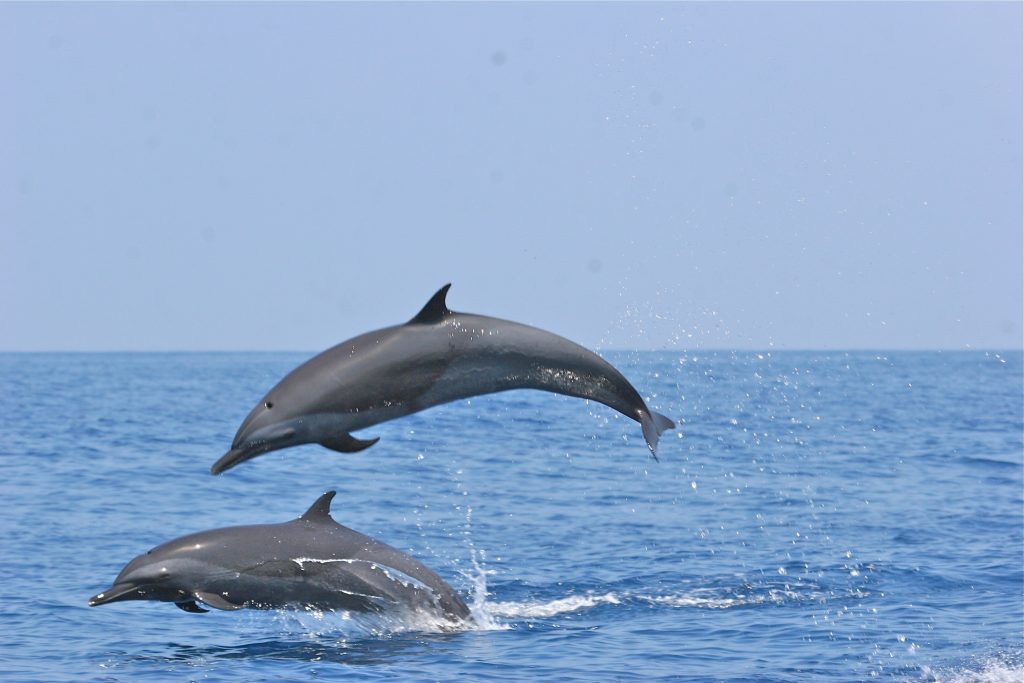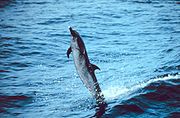Common Name: Pan-tropical spotted dolphin
General Description: Pantropical spotted dolphins are grey overall, darker above and on the upper flanks, and lighter on the belly and lower flanks. The body is usually spotted, thought spotting varies with regions, with white spots above and dark spots below. The spotting increases with age. They have a beak that is moderately long, and a tall, falcate dorsal fin which is centrally placed.
Newborn spotted dolphins are unspotted, having a dark grey back with soft edges and a light belly.
There is a distinct dark grey cape, from the head to the dorsal fin. A light coloured flare can be seen from above the eye, turning downwards and up again rising just behind the dorsal fin. A black circle around the eye extends to the junction of the beak and the melon, and a broad black stripe runs from the origin of the flipper to the corner of the mouth. Due the presence of a distinct bridle it is also known as the Bridled Dolphin.
Coastal forms are generally larger and more heavily spotted than those which live offshore.

Spotted dolphins off the coast of Tamil Nadu, India @ Dipani Sutaria
Size: Adults, around 2 m long, weigh around 110 kg.Calves at birth, 90cm long.
Appearance At Sea: Spotted Dolphin schools vary from a few individuals to thousands. There appears to be no segregation based on age or sex. Individual dolphins regularly come to the bows of vessels in the ocean.
Spotted Dolphins often throw themselves out of the water, high into the air.
They are found in mixed species assemblages with other species of dolphins like spinner dolphins and striped dolphins often along with schools. Spotted dolphins like other Stenella and Delphinus species have been commonly by caught in purse-seine tuna nets. When caught along with tuna in a net, the dolphins thrash about at first and then get into a sort of stupor. They simply sink tail first into the folds of the net, where they lie until they are pulled out or drown.
Found In: Pan-tropical spotted dolphins are found in tropical oceans with warm surface temperatures, both in coastal and offshore regions. They are surface feeders, feeding on various species of fish and squid.
Records from India: Pan-tropical spotted dolphins are found offshore in the Arabian Sea and in the Bay of Bengal.
World Distribution: These dolphins are widely distributed in tropical and some warm temperate waters in a band of varying width around the equator.
Could Be Confused With: Even at a distance the spotting on the dolphins is usually evident, making it easy to identify the species. They are sometimes confused with other Stenella species.
Diagnostic Features: At sea, the unique facial markings (presence of a marked bridle), uniform dark cape on the dorsal side, and presence of a dark flipper line help in identifying the species.
Stranded Specimens: Pan-tropical spotted dolphins have 35-40 tiny pointed teeth on each side of both slender jaws.




